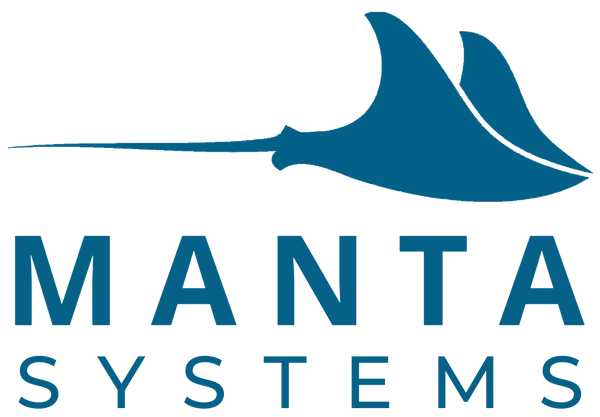.png)
Understanding Phosphates in the Saltwater Home Aquarium:
Balancing Algae Control and Coral Health
Hello, Reef Enthusiasts!
Today, we're diving into a critical yet often misunderstood aspect of saltwater aquarium care: phosphates. Phosphates play a crucial role in your aquarium's ecosystem, and managing their levels is vital for maintaining a healthy and thriving tank. In this detailed guide, we'll explore what phosphates are, why they need to be controlled for algae, and how they benefit corals. Let's get started!
What Are Phosphates?
Phosphates (PO4) are chemical compounds that contain the element phosphorus, an essential nutrient for all living organisms. In saltwater aquariums, phosphates are present in the water column and can originate from various sources, including fish waste, uneaten food, decaying plant matter, and even from the salt mix used for water changes.
Why Phosphates Need to Be Controlled
Algae Growth
Phosphates are a primary nutrient for algae. When phosphate levels are high, they can fuel the growth of nuisance algae, such as hair algae, cyanobacteria, and diatoms. Excessive algae growth can lead to several problems:
- Unsightly Appearance: Algae can cover your rocks, corals, and tank walls, making your aquarium look unkempt.
- Competition for Resources: Algae compete with corals and other photosynthetic organisms for light and nutrients.
- Oxygen Depletion: Algae blooms can consume significant amounts of oxygen during nighttime respiration, potentially stressing or suffocating your fish and corals.
Coral Health
While phosphates are necessary for corals in small amounts, excessive levels can inhibit coral growth and reproduction. High phosphate levels can also interfere with the calcification process, crucial for corals to build their skeletons.
Sources of Phosphates in the Aquarium
Understanding where phosphates come from can help you manage and control their levels:
- Fish Waste and Uneaten Food: Fish excrete phosphates through waste, and any uneaten food decomposes, releasing phosphates into the water.
- Decaying Organic Matter: Dead plants, corals, and other organic matter break down into phosphates.
- Tap Water: If you're using tap water for water changes, it might contain phosphates. Using a reverse osmosis (RO) unit can help remove these impurities.
- Salt Mix: Some commercial salt mixes may contain trace amounts of phosphates.
Testing for Phosphates
Regularly testing phosphate levels in your aquarium is crucial for maintaining a healthy balance. Here's how to test for phosphates:
Using a Phosphate Test Kit
- Collect a Water Sample: Fill the test vial with a sample of water from your aquarium.
- Add the Reagent: Add the phosphate reagent to the water sample according to the test kit's instructions.
- Wait for the Reaction: Allow the sample to react for the specified time.
- Compare the Color: Compare the color of the water sample to the color chart provided in the test kit to determine the phosphate concentration.
Using a Digital Phosphate Meter
- Calibrate the Meter: Follow the manufacturer's instructions to calibrate the meter.
- Test the Water Sample: Submerge the meter's probe in the water sample and wait for the reading to stabilize.
- Record the Phosphate Level: Note the phosphate concentration displayed on the meter.
Managing Phosphate Levels
Effective management of phosphate levels involves a combination of prevention, reduction, and maintenance strategies:
Prevention
- Feed Sparingly: Avoid overfeeding your fish. Only provide as much food as they can consume within a few minutes.
- Use RO/DI Water: Use reverse osmosis (RO) or deionized (DI) water for water changes to minimize phosphate introduction.
- Regular Maintenance: Perform regular water changes and clean your tank to remove organic matter before it decomposes into phosphates.
Reduction
- Phosphate Absorbers: Use phosphate-absorbing media, such as granular ferric oxide (GFO), in your filter system. These media bind to phosphates, removing them from the water column.
- Protein Skimmers: A high-quality protein skimmer can help remove organic waste before it breaks down into phosphates.
- Macroalgae: Growing macroalgae, like Chaetomorpha, in a refugium can help absorb excess phosphates and compete with nuisance algae for nutrients.
Maintenance
- Regular Testing: Test phosphate levels regularly to monitor and maintain them within the optimal range.
- Adjust Feeding and Maintenance: Based on test results, adjust feeding practices and maintenance routines as needed.
Phosphates and Coral Health
While it's essential to control phosphate levels to prevent algae overgrowth, it's equally important to understand that corals need some phosphates for healthy growth and metabolic functions. Phosphates play a role in:
- Energy Transfer: Phosphates are involved in the energy transfer processes within coral cells, aiding in their overall health and growth.
- DNA and RNA Synthesis: Phosphates are crucial for the synthesis of DNA and RNA, essential for cell division and reproduction.
Maintaining a low but detectable level of phosphates (around 0.03 to 0.1 ppm) is ideal for supporting coral health without promoting excessive algae growth.
Conclusion
Balancing phosphate levels in your saltwater aquarium is a delicate but essential task. By understanding the sources of phosphates, regularly testing and managing their levels, and maintaining a balanced ecosystem, you can create a thriving environment for your marine life and corals. Remember, a little phosphate goes a long way in keeping your corals healthy, but too much can quickly turn your beautiful reef tank into an algae-infested mess.
Happy Reefing!
